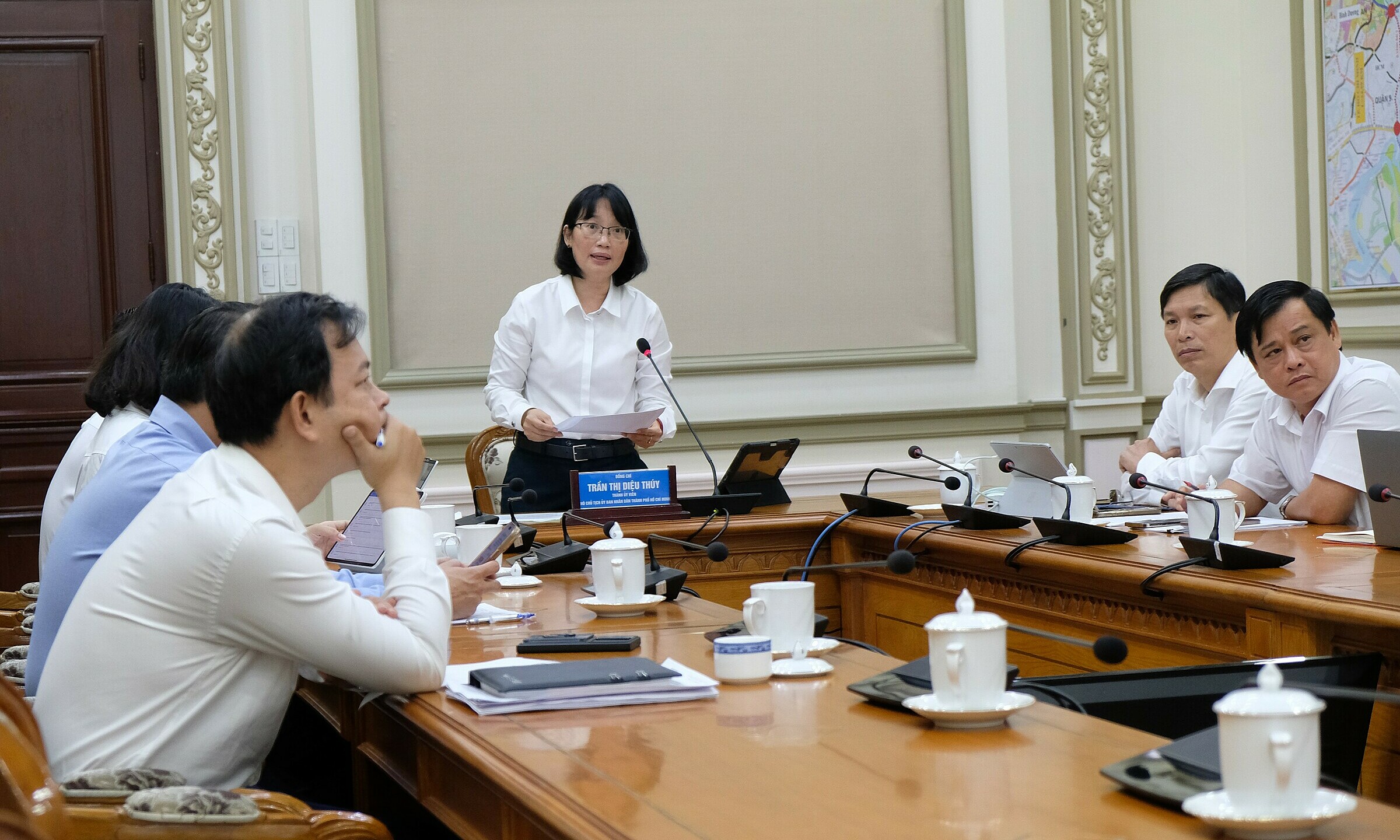Ho Chi Minh City has identified the semiconductor industry as a new growth driver and is prioritizing preferential policies and special mechanisms to attract strategic investment.
This information was shared by Tran Thi Dieu Thuy, Vice Chairwoman of the Ho Chi Minh City People's Committee, at the second meeting of the National Steering Committee for Semiconductor Industry Development on 4/8. Thuy stated that the city has identified semiconductor development as a new growth driver, aligning with its role as the country's economic, financial, technological, and innovation hub.
 |
Vice Chairwoman of the Ho Chi Minh City People's Committee Tran Thi Dieu Thuy speaks at the meeting. Photo: Ho Chi Minh City Portal |
Vice Chairwoman of the Ho Chi Minh City People's Committee Tran Thi Dieu Thuy speaks at the meeting. Photo: Ho Chi Minh City Portal
By 2030, Ho Chi Minh City aims to become a smart city with modern services and industries, leading the region in the digital economy and society. To achieve this, the city prioritizes attracting strategic investment in the semiconductor industry, following the spirit of Resolution 98/2023/QH15 on special mechanisms.
Regarding policy, Ho Chi Minh City has issued Plan 1231, Decision 3686, and Plan 1858 to implement the national semiconductor industry development strategy. The city is also actively implementing Resolution 98, focusing on attracting strategic investors.
Ho Chi Minh City has attracted major corporations such as Intel, Samsung, Marvell, Renesas, Siemens EDA, and Ampere Computing. Within the Saigon Hi-Tech Park (SHTP), 37 electronics and semiconductor projects are operating with a total investment of over 7.7 billion USD. The city has invested in an international-standard SHTP Research Center and is developing a 125 billion VND digital and green transformation research center.
To further develop the semiconductor industry, Ho Chi Minh City has submitted to the Prime Minister a proposal to expand SHTP, adding the function of a Science and Technology Park. It is also developing a plan for a digital technology industrial park with special incentives for the industry.
However, the industry faces challenges such as a lack of mechanisms to attract talent, slow licensing procedures for large projects, and complex public investment in R&D infrastructure.
Vice Chairwoman Tran Thi Dieu Thuy proposed a 10-year personal income tax exemption for domestic and foreign semiconductor experts. She also suggested adding chip production projects and data centers to the priority list and applying a "green channel" for administrative procedures. She also urged the government to expedite the approval of the SHTP expansion project and provide preferential credit for businesses investing in chip design, semiconductor materials, and supporting industries.
"Semiconductor industry development is not only a strategic direction but also a golden opportunity for Vietnam to rise in the global value chain. The city is committed to becoming a growth pole and a semiconductor industry hub for the region," Thuy said.
Experts believe Vietnam has a golden opportunity to develop its semiconductor industry with clear strategies and policies. The industry's value chain is gradually forming with the participation of major corporations: Intel (a 1.5 billion USD chip assembly plant in Ho Chi Minh City), Amkor (a 1.6 billion USD packaging plant in Bac Ninh), Renesas, Marvell, and Synopsys (design centers in Vietnam). Domestically, Viettel High Tech designs 5G chips, and FPT Semiconductor produces power chips for IoT.
Additionally, CT Group plans to expand its factory to a capacity of 100 million chips per year by 2027. R&D infrastructure investments include SHTP Labs (Ho Chi Minh City, 300 billion VND) and a laboratory at Hanoi National University (5 million USD).
The National Assembly has approved a support mechanism of up to 30% of total investment, not exceeding 10,000 billion VND, for the first chip factory projects in Vietnam, serving training, research, and pilot production before 2030.
While many foreign direct investment enterprises have invested in semiconductor factories in Vietnam, most of the technology, machinery, and organization are still operated by foreign entities. Vietnam mainly participates in testing and packaging stages. The supporting industry is not yet strong enough to master the value chain.
Infrastructure for R&D, training, and production remains limited. The source of high-quality human resources does not yet meet the industry's development requirements.
The country currently has about 7,000 engineers working in semiconductor design enterprises; 6,000 engineers and 10,000 technicians in packaging, testing, material production, and semiconductor equipment. The industry's innovation network brings together over 100 Vietnamese experts worldwide.
There are 166 semiconductor training institutions, with over 6,300 students majoring in the field and 12,000 students in related fields. Approximately 20 institutions implement the triple helix model (university-industry-government) in training.
Hoang Dan












